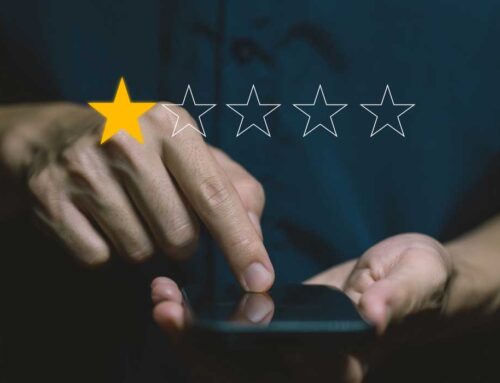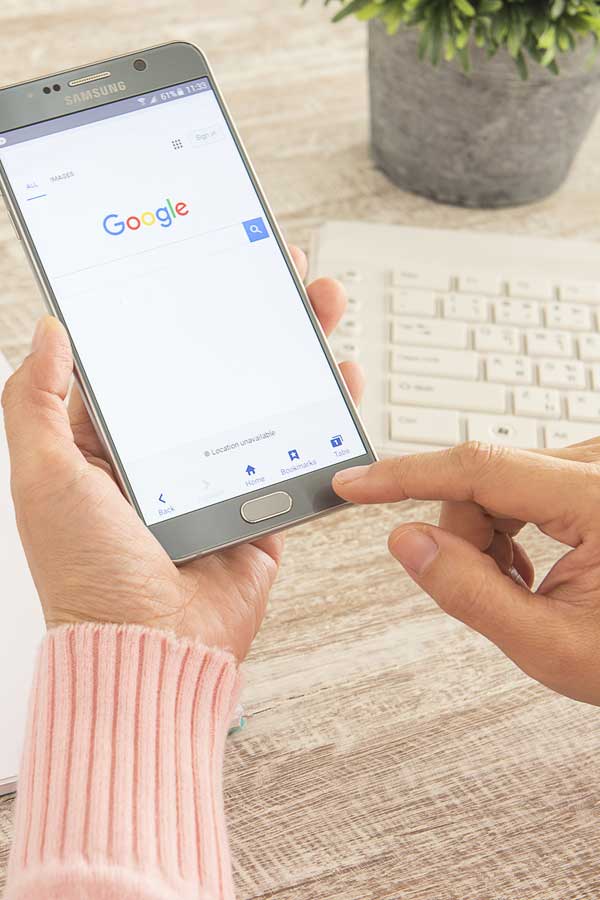Local SEO is a vital tool for all businesses. Did you know that 80% of users use search to find local details and information? That means that if your website and online presence aren’t locally optimized, you’re losing up to 80% of your client base. Not a good strategy if you want local business.
It doesn’t matter if you’re a solopreneur or a large business with over 200 employees; if you want to attract more business locally, this article is for you. How do you do it? Through a solid local SEO campaign.
This article will explain what local SEO is, what ranking factors matter most to Google, and strategies you can implement for better local SEO results.
What is Local SEO?
Local SEO is the science of optimizing your website and web presence to rank better for local audiences. To gather information for rankings, search engines look to local signals such as local content on your website, citations, social profiles, and citations.
According to Yoast.com:
If you have a local business, like a shop, or have people visiting your office frequently, optimizing your website is also about making sure people are able to find you in real life. But even if you’re not actively getting visitors in your building but are targeting an audience that is located in the same geographical area as you are, you need to optimize for that area. This is what we call “local SEO.”
The role of your mobile device in local SEO
Using a mobile device to get your intel is only becoming more popular. Google recognizes this, so you should too.
When a user does a search on their phone while driving through a specific area, Google will show the user the most reliable and useful results, so if you want to be one of those results, you need to optimize for it.
Almost every device out there has location availability enabled in order to find places, things, needs, etc., close to where they are, so location matters.
Legitimacy reigns in local SEO
Obvious statement, we know. But optimizing for a location gives you some true street cred with the search engines and with the users. It’s one of the easiest ways to prove you’re a real company. So, GBP up, kids. (That’s Google Business Profile and if you don’t know about it, read on.)
Local SEO Statistics
Did you know…
- More than half of internet users worldwide (60.73%) use mobile devices for local search (Stat Counter, July 2022)
- 72% of consumers that did a local search visited a store within five miles. (Source: HubSpot Marketing Statistics)
- 88% of searches for local businesses on a mobile device either call or visit the business within 24 hours. (Source: Nectafy)
- 18% of local smartphone searches led to a purchase within a day, whereas only 7% of non-local searches led to a sale. (Source: Think with Google)
- 78% of location-based mobile searches result in an offline purchase. (Source: SEO Tribunal)
- In 2020, 93% of consumers used online searches to find a local business. 34% were conducted every day, and 73% were done weekly. (Source: BrightLocal’s 2020 Customer Review Survey)
- 4 in 5 consumers use search engines to find local information. (Source: Think with Google)
- 28% of the searches for something local will result in a purchase (Source: SEOtribunal.com)
- About 67% of smartphone users are more likely to buy from companies with location-optimized mobile websites (Google, 2020)
- 86% of people rely on Google Maps to find the location of a business (Source: Backlinko, 2020)
>> Bonus Material: Google Business Profile Ultimate Guide & Checklist
Great, so now you know just what local SEO is and how important it can be, now let’s look at local ranking factors.
Local Ranking Factors
What factors into local rankings?
Local SEO consists of a number of factors that help you address your local audience by better rankings in search engines.
Google itself states that local ranking factors include relevance, distance, and prominence.

Image from whitespark.ca
Now, it’s time for strategy!
Let’s look at some simple strategies you can use to improve your local SEO rankings.
Best practices for local SEO
If you own a local business, never has having an online presence been more important. It’s kind of like online dating. If you’re not doing it, you’re missing out on a ton of opportunities because so many people are looking online.
So, you want to be sure that your business is popping up as an option for all those potential dates… I mean customers.
Below are a few ways to help you succeed at local SEO.
How to achieve local SEO success
Don’t think that just jumping on your computer and creating your GBP profile will bada-boom-bada-bing you into global-local SEO awesomeness that all will hope to aspire to.
It’s gonna take some work. Both on your web pages and behind the scenes of your web pages (on-page SEO) and off your web pages altogether (off-page SEO).
Here’s how…
Off-page local SEO strategies
These strategies consist of actions your business takes off of your website in order to gain a higher ranking with the search engines.
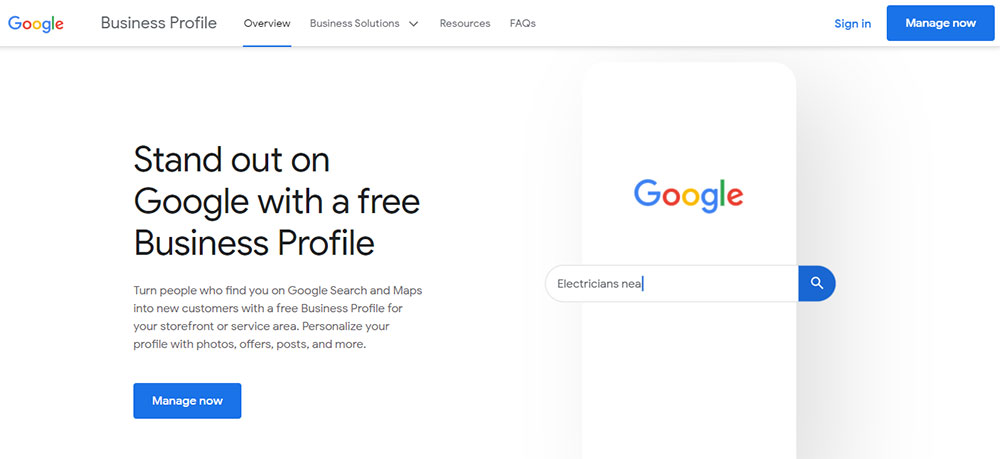
Image from Google Business Profile
Google Business Profile and local SEO
A critical step for any business trying to rank locally is to include Google’s free tool, Google Business Profile (GBP), in your local SEO strategy.
Listings on Google Business Profile can only be created for businesses that either have a physical location that customers can visit or that travel to visit customers where they are.
You can read the complete guidelines here.
A verified GBP account lets you manage how your business shows up on Google Search and Maps.
Including:
- Business name
- Location
- Hours of operation
- Monitoring and replying to customer reviews
- Adding photos
- Learning where and how people are searching for your company
- COVID information
- And more
Google Business Profile is a super easy way to get you noticed locally.
Correct citations – Get your NAP (name, address, phone) out there
It’s imperative that you get your NAP out on the street, so all are aware of who you are, where you are, and how to get in touch with you. Just as important: all your NAPs match precisely.
Handing out brochures? Business cards? References? Great! Make your NAP easy to see on all of your business documents. This will help you kill it at brand awareness, too.
Go online and add your matching NAP to relevant directories, GMB, Yelp, Yellow Pages, and jump over to Quora and answer some questions (again, relevant to your biz and be sure your answers are top-notch) and leave your NAP there, too.
All of this will help support your off-page local SEO campaign.
Note that your NAP will directly affect your results in the Map Pack (aka Local Pack), which are the top three local businesses that Google shows a searcher and includes their pin on a map.
In most cases, the Map Pack changes consistently because it’s dependent upon the searcher’s precise location when searching. The Map Pack plays a significant role in the UX (user experience), helping a person quickly find the closest locations of the product or service they’re searching for.
Reviews for local SEO
Local SEO consists of a number of factors that help you address your local audience by better rankings in search engines.
A website’s reputation on Google Business Profile, Yelp.com, and other review sites, play an important role in Google’s algorithm.
According to Search Engine Watch, reviews that mention products and services lend to optimization and can help your business show up for specific local product or service searches,
Whitespark released the findings from its annual Google Local Rankings Survey. The results of the survey found that reviews accounted for 15.44% of how Google ranks a local business.
Not to mention that having great online reviews will give you a solid reputation in your industry while providing customer traction and loyalty.
We’ve got two awesome resources for you on reviews:
Link building for Local SEO
Link building is a big win on all levels, and it can profoundly affect your local biz, getting it the attention it deserves. Inbound links (links from other websites to your website) are going to get you some valuable relevancy points from the search engines if the source referencing you is reliable and trustworthy.
Below are just a few examples of what you can do to make sure your link building is working for you on a local SEO level.
Host a community event
Everyone loves to give love to their community.
By hosting an event, you’ll not only let those in your area get to know the person behind the business, but you’ll also get to add your link to the community/town/county website.
And if you’re hosting at your place of business, your whole NAP (name, address, phone) is there for all to see!
Contact your town officials and tell them what kind of event you’d like to have and let them help provide the advertising.
Getting the local news stations on board will contribute to the event’s success- and your link building!
Take it offline
Go old-school with your marketing tactics.
Hand out business cards—network at the bar, the school, the grocery store.
Talk to people – it’s a tried-and-true form of marketing that will lead to more business and likely more link shares.
Local businesses unite
A great way to link build is to partner up with other companies that go hand-in-hand with yours.
If you’re an interior designer, reach out to local builders and architects. Realtors can connect with mortgage companies.
Are there local businesses that provide the same type of service you do with varying offers?
In these ways, you can create a mutually beneficial link building campaign reaching thousands more potential customers.
Questions and answers
Sites devoted to asking and answering questions are a way to get you some attention.
Although you’ll be building nofollow links, they can lead to traffic.
Check out Reddit, Quora, or Yahoo! Answers, ask a question that you answer, and add your website as a source for the answer.
Remember to stay concise and trustworthy.
Link building is a fundamental resource for getting the most out of your local SEO campaign.
Submit your website to directories
Quality citations and links from online directories are likely to improve your search ranks and increase company and brand awareness. (Don’t forget NAP details from three seconds ago.)
There are several online directories out there – paid, free, niche, etc., that you can use as a start for list building.
Not all are created equal.
Not all are right for all businesses.
The best place to start is to outline your target audience, so you know where they are and where they search.
Confirm that your NAP is correct and the same across all site directories and that there are no duplicate or incorrect listings. This means to be sure if you abbreviate “street” with one directory, you abbreviate “street” with all; if you have a suite number, be sure you show it everywhere. And don’t forget to proof your NAP after you fill it in to avoid any spelling errors, etc.
Consider getting listed in online directories like YellowPages, Yelp, Google Business Profile, Chamber of Commerce, and industry-specific sites.
Publish press releases
While Google has determined that press releases are now “rank agnostic” in terms of actually increasing SERP rankings through their backlinks, there are still many advantages to a press release as part of an SEO strategy.
While most media outlets that publish releases usually include a nofollow link (not all, but some), it can still prove to be a good form of link building.
Additional indirect SEO benefits include:
- Your information and news reaching more customers
- Increase in visibility and trust
- Position your company as an industry leader
Sending out a press release is a great way to generate buzz about your brand and increase traffic to your website and give you a good SEO boost.
Make sure that your message is on point and relevant.
Press releases often offer that quick win for SEO when you use a wire service and put together a great release. How?
Even if your website doesn’t gain a top spot, your release will on the day it comes out, along with news outlets that pick it up.
Think of it like playing the game of Monopoly; you want to spread out the information about your company to vast outlets.
When putting together a press release, make sure you:
- Keep content relevant, readable, and newsworthy
- Do keyword research
- Use shareable headlines
- Use your keyword in the headline, first paragraph, and throughout the release (without stuffing)
- Add anchor text backlinks to your website
- Include a call-to-action
- Include multimedia
- Maximize distribution by using a reputable wire service like Cision PRWeb
Get social on social media
Don’t fight it; social media is a big deal and deserves your utmost attention, especially with your local crowd.
Not only do the natives enjoy seeing your local flare pop up on their feed, but Google really likes it too. Know your audience and appeal to them where they are.
Keep in mind that you don’t always have to be “selling.” Give them local insights, talk about upcoming events in your town, tell them about your favorite local cupcake baker.
Being social with your audience is easier than ever now, and you should definitely be taking advantage of that. And, hey, when someone tells us about good cupcakes, you become our friend for life. You never know who you’ll impact.
On-page local SEO strategies
These strategies consist of actions your business takes on your website (both front- and back-end) in order to gain a higher ranking with the search engines. Let’s talk about some of the best.
Optimize your website for best on-page SEO practices, making sure it’s also mobile-friendly.
The first place to start is with a good SEO foundation on your website.
Make sure you’re following the best overall traditional SEO on-page practices:
- Confirm your website is mobile-friendly
- Do keyword research
- Use geographical long-tail keywords – include location-specific words in your website content
- Include title tags – include city and state in title tags when it’s appropriate
- Use meta descriptions
- Don’t forget header tags that include keywords
- Include your physical address – type out the state name, don’t abbreviate it (if you have one)
- Work on getting quality inbound links to your website from locally relevant domains
- Include a sitemap
- Have a clear navigation structure on your website
- Use anchor links – internal links and external links
- Fix any broken links
- Make sure your website loads at a relatively quick rate
- Use alt description tags with your images
You can reference Step 3 & Step 4 of the 9 Steps to a Successful Website Campaign for more details on SEO best practices. Or download the printable version.
Content marketing and local SEO
You know when you’re buying a house, they say: location, location, location? Well, when you’re putting together your local SEO campaign, they say: content, content, content.
It’s so important.
Let’s go over a few must-have content recipes for your local SEO success:
Landing pages for your city
If you don’t have a landing page for your specific city, you’re really missing out on some traffic and devaluing your local SEO strategy.
Adding this small feature will contribute to users finding you locally while ensuring your credibility on the search engines.
If you have more than one location, create one landing page for each city/state/region you’re in and make that page truly devoted to the unique area your page is defining. Cater to the locals through your content.
Check out How to Rank for Surrounding Cities Near You to see how we recommend putting together specific location-based pages.
Locals-only promotions
Providing a locals-only deal is a great way to pull the natives in. We all love feeling special, and giving local customers a discount or a freebie is a smart move for getting your business noticed in your community.
This will also contribute to your very sought-after word-of-mouth advertising.
According to WordStream, using location-based coupons on mobile can lead to a 9916% increase in incremental mobile revenue.
Be a host
Invite the masses over for an event, and you’ll be the talk of the town. You can easily get free press through community websites and local news stations.
You can also rent your space out to others for hosting, allowing people who may not have seen your space or known your business previously the opportunity to gain an understanding of what you do and who you are.
Blog about it
You’re a local business looking for local customers, so you’re undoubtedly blogging. And if you’re not, please do.
You’ll move up on the search engines – a win – but you’ll also take advantage of content opportunities only a local business can relate to. And that’s the goal, relating to your customer.
Once you have a relationship with your customer, they’ll not only remain loyal but bring in more customers, too.
So, now you’re well on your way to being a huge local celebrity. Local SEO doesn’t have to be intimidating; after all, you’re appealing to your people, and you’re one of them.
Get out there- let them get to know you.
Title tags that offer some mystery
You’ve been taught to stay within the 50 to 60-character limit with your title tags, but if you generate a little mystery, ohhhh… you’ve got a thriller on your hands.
Start off with a statement that provides some help and benefits your audience, then let it go over the 50-character limit, so there’s a trail (and sets a “what’s to come” precedent). This will inspire more clicks.
Optimize for “near me” search queries
Search queries that contain a location qualifier such as “nearby” or “near me” have doubled in the past year, according to Google Trends data from March 2021.
Eighty percent of those searches come from mobile devices. The guys over at Local SEO Guide did a study of “near me” local SEO ranking factors.
Understand that the “me” part of “near me” is a specific place, not just another keyword to target.
John Mueller addressed this and whether sites need to optimize for “near me” specifically or how Google is determining this.
So as far as I know, we mostly look at this with regards to location, so doing things like adding “pizzeria near me” as a title of your pages on your website probably doesn’t make that much sense because we would try to figure out like what is actually near the user.
So in order for us to be able to figure that out properly, now there are two things you can do. One is obviously put your address on your website and to mark that up appropriately with structured data so that we understand where your location is. The other is to set up a Google My Business* local listing so that we know where your business is located and can connect that to your website as well.
*Note that Google My Business is the former name of Google Business Profile
What’s next?
At Propel, we help clinic owners get more recognition online so website visitors become patients. Book your discovery call or watch our free SEO training.

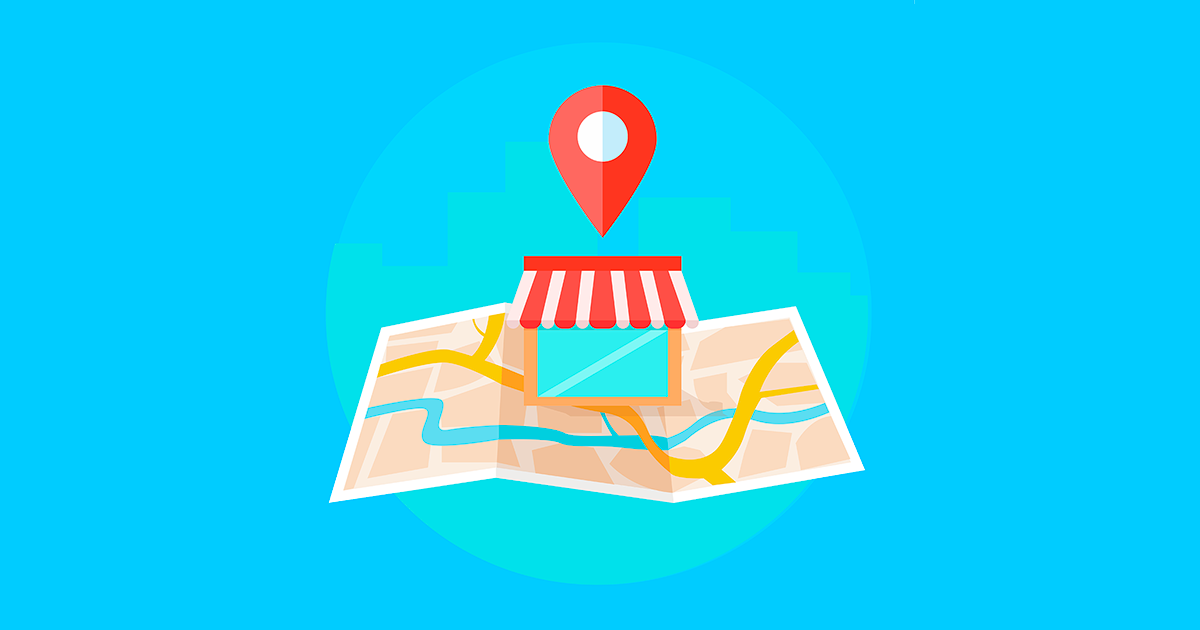
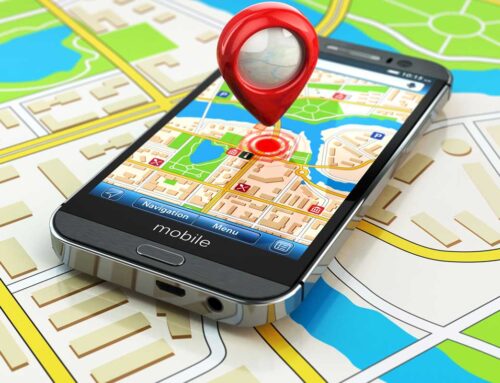

![How to Write a Professional Chiropractic Bio [Template Included]](https://propelyourcompany.com/wp-content/uploads/write-a-bio-500x383.jpg)
